A Wireless Gamma-Ray Monitoring System for Cemented Radwaste Drums
Abstract
:1. Introduction
2. Materials and Methods
2.1. The Detector
2.2. Front-End Electronics
- Modularity, allowing for easy maintenance and the possibility to use the same electronics, with minor modifications, coupled to different detectors and in different scenarios.
- Low power consumption, obtained by choosing proper components and keeping the system in sleeping mode as long as possible, except during the measurement and data transmission phases.
- Low cost, by employing common components present on the market and reducing, when possible, the Research & Development costs.
- Charge-sensitive pre-amplifier CREMAT CR-110 rev.2.01.
- High-pass filter.
- Shaper CREMAT CR-200-1µs.
- Attenuator with a factor of 0.05.
- Base-line restorer circuit (τ ≈ 700 µs).
2.3. Data Acquisition and Transmission
2.4. Test with a Laboratory Source
2.5. Firmware and Software Development
- Dynamic device registration, allowing the registration of an unknown device.
- Programmatic parameter configuration, allowing the operator to define hardware and measurement parameters for each device interactively.
- Scheduling, where each device can measure at predefined times defined by one or more schedules.
- User Interface (UI), which allows an operator to interact with the devices and display all parameters.
2.6. The Mockup Drum
2.7. Mockup Simulation
3. Results
3.1. System Installation
3.2. System Tuning
3.3. Measurement Results
4. Conclusions
Author Contributions
Funding
Data Availability Statement
Acknowledgments
Conflicts of Interest
References
- PREDIS Project, Euratom H2020, GA No. 945098. Available online: https://predis-h2020.eu/ (accessed on 23 February 2024).
- IAEA. Monitoring and Surveillance of Radioactive Waste Disposal Facilities; Specific Safety Guide No. SSG-31, IAEA Safety Standards; IAEA: Vienna, Austria, 2014. [Google Scholar]
- Finocchiaro, P. DMNR: A new concept for real-time online monitoring of short and medium term radioactive waste. In Radioactive Waste: Sources, Types and Management; Nova Science Publishers: New York, NY, USA, 2011; pp. 1–40. [Google Scholar]
- Cosentino, L.; Calì, C.; De Luca, G.; Guardo, G.; Litrico, P.; Pappalardo, A.; Piscopo, M.; Scirè, C.; Scirè, S.; Vecchio, G.; et al. Real-Time Online Monitoring of Radwaste Storage: A Proof-of-Principle Test Prototype. IEEE Trans. Nucl. Sci. 2012, 59, 1426–1431. [Google Scholar] [CrossRef]
- Finocchiaro, P.; Ripani, M. Radioactive Waste Monitoring: Opportunities from New Technologies. In Proceedings of the IAEA International Conference on Physical Protection of Nuclear Material and Nuclear Facilities, IAEA-CN-254/117, Vienna, Austria, 13–17 November 2017. [Google Scholar]
- Cosentino, L.; Giuffrida, M.; Lo Meo, S.; Longhitano, F.; Pappalardo, A.; Passaro, G.; Finocchiaro, P. Gamma—Ray Counters to Monitor Radioactive Waste Packages in the MICADO Project. Instruments 2021, 5, 19. [Google Scholar] [CrossRef]
- Cosentino, L.; Ducasse, Q.; Giuffrida, M.; Lo Meo, S.; Longhitano, F.; Marchetta, C.; Massara, A.; Pappalardo, P.; Passaro, G.; Russo, S.; et al. SiLiF Neutron Counters to Monitor Nuclear Materials in the MICADO Project. Sensors 2021, 21, 2630. [Google Scholar] [CrossRef] [PubMed]
- MICADO Project. Available online: https://www.micado-project.eu/ (accessed on 23 February 2024).
- Han, Y.; Xu, S.; Huang, Y. Real-Time Monitoring Method for Radioactive Substances Using Monolithic Active Pixel Sensors (MAPS). Sensors 2022, 22, 3919. [Google Scholar] [CrossRef] [PubMed]
- Luxium Solutions (Previously Saint Gobain Crystals) Scintillating Fibers. Available online: https://www.mi-net.co.uk/product/scintillating-fiber/ (accessed on 23 February 2024).
- ON Semiconductor. Available online: https://www.onsemi.com/products/sensors/photodetectors-sipm-spad/silicon-photomultipliers-sipm (accessed on 23 February 2024).
- Dolgoshein, B.; Balagura, V.; Buzhan, P.; Danilov, M.; Filatov, L.; Garutti, E.; Groll, M.; Ilyin, A.; Kantserova, V.; Kaplin, V.; et al. Status report on silicon photomultiplier development and its applications. Nucl. Instrum. Meth. A 2006, 563, 368. [Google Scholar] [CrossRef]
- Zappa, F.; Tisa, S.; Tosi, A.; Cova, S. Principles and features of single-photon avalanche diode arrays. Sens. Actuators A 2007, 140, 103. [Google Scholar] [CrossRef]
- Finocchiaro, P.; Pappalardo, A.; Cosentino, L.; Belluso, M.; Billotta, S.; Bonanno, G.; Carbone, B.; Condorelli, G.; Di Mauro, S.; Fallica, G.; et al. Characterization of a Novel 100-Channel Silicon Photomultiplier—Part I: Noise. IEEE Trans. Electron. Devices 2008, 55, 2757. [Google Scholar] [CrossRef]
- Finocchiaro, P.; Pappalardo, A.; Cosentino, L.; Belluso, M.; Billotta, S.; Bonanno, G.; Carbone, B.; Condorelli, G.; Di Mauro, S.; Fallica, G.; et al. Characterization of a Novel 100-Channel Silicon Photomultiplier— Part II: Charge and Time. IEEE Trans. Electron. Devices 2008, 55, 2765. [Google Scholar] [CrossRef]
- Espressif. Available online: https://www.espressif.com/sites/default/files/documentation/esp32_datasheet_en.pdf (accessed on 23 February 2024).
- Fasso, A.; Ferrari, A.; Ranft, J.; Sala, P.R. FLUKA: A Multi-Particle Transport Code; CERN Technical Report No. SLAC-R-773; Stanford University: Stanford, CA, USA, 2005. [Google Scholar]
- Cosentino, L.; Finocchiaro, P.; Pappalardo, A.; Garibaldi, F. Characterization of a scintillating mini-detector for time-of- flight positron emission tomography with depth-of-interaction. Rev. Sci. Instrum. 2012, 83, 084302. [Google Scholar] [CrossRef] [PubMed]
- Papandreou, Z. Scintillating Fiber Trapping Efficiency, GlueX-doc-918-v2; GlueX Collaboration: Newport News, VA, USA, 2007. [Google Scholar]
- Paul, B. An Overview of LoRaWAN. WSEAS Trans. Commun. 2020, 19, 231. [Google Scholar] [CrossRef]


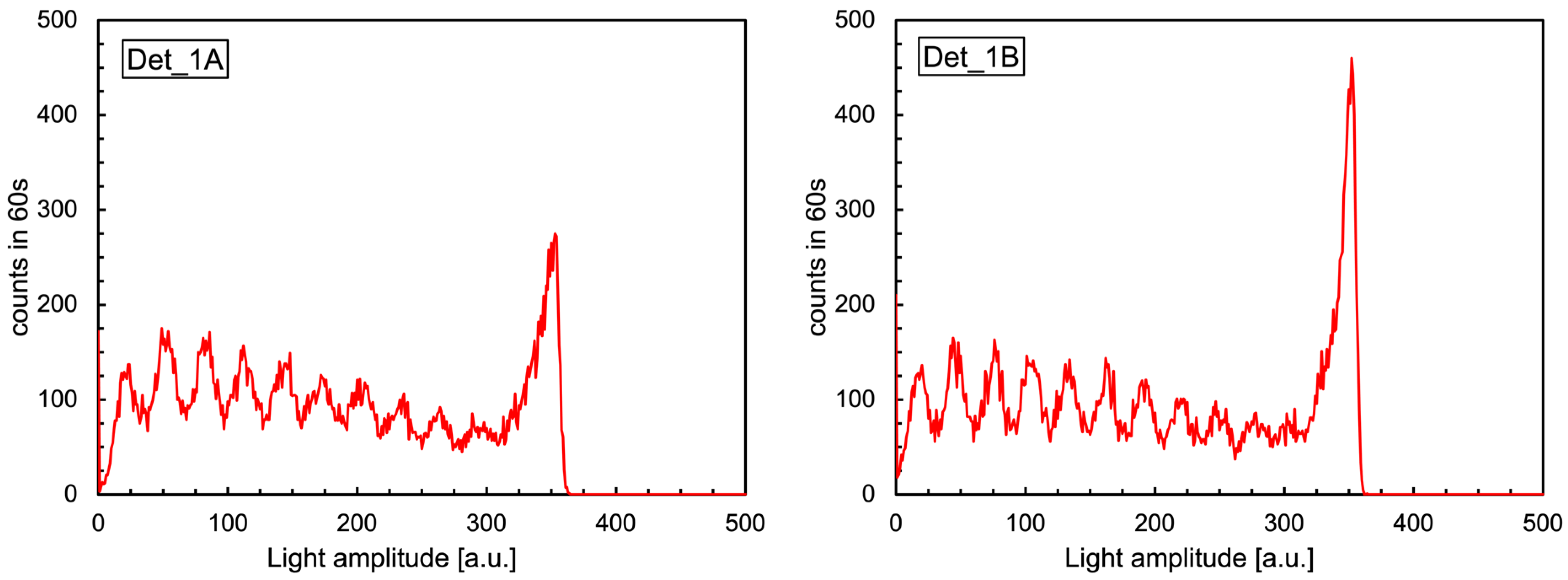
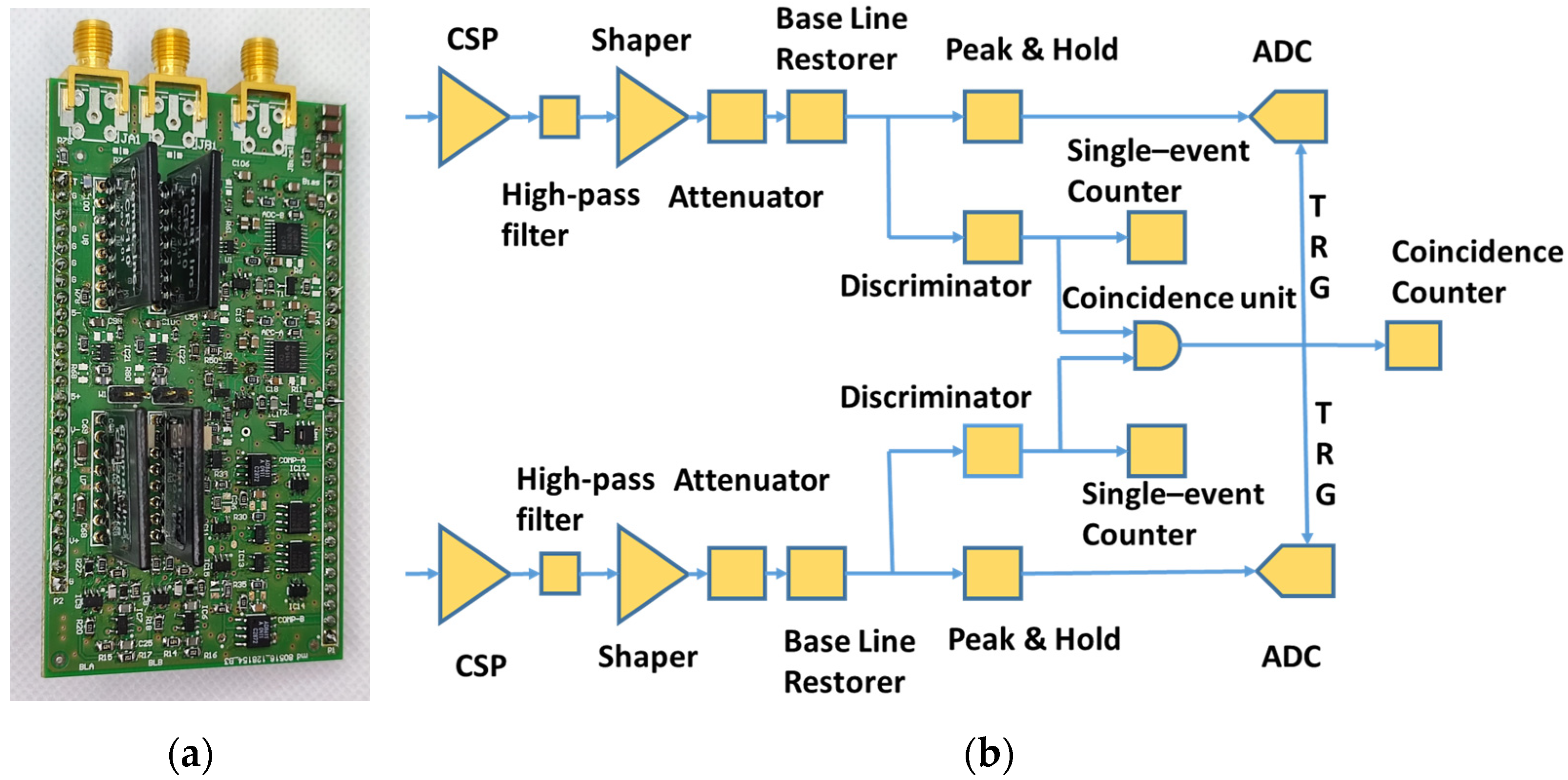

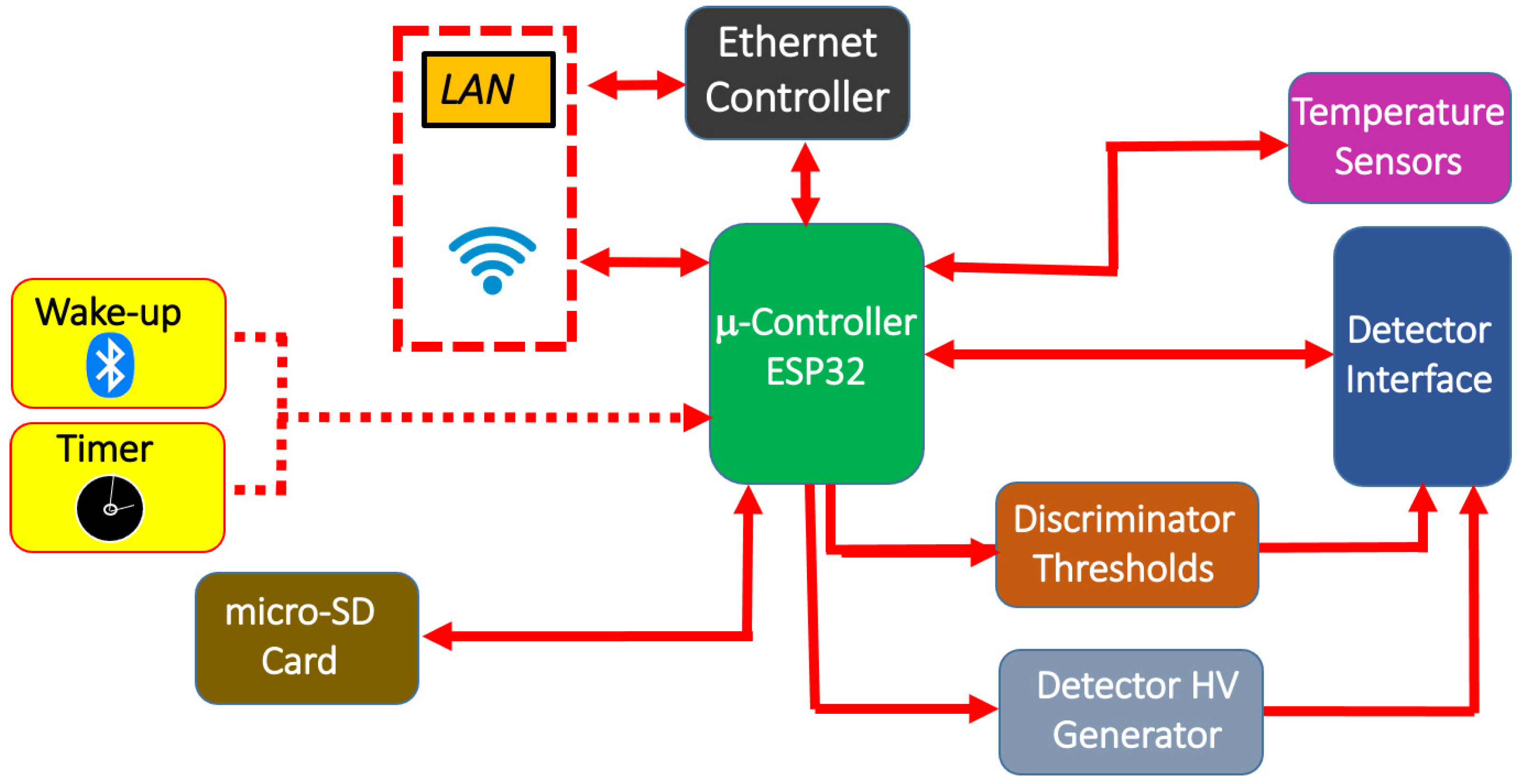
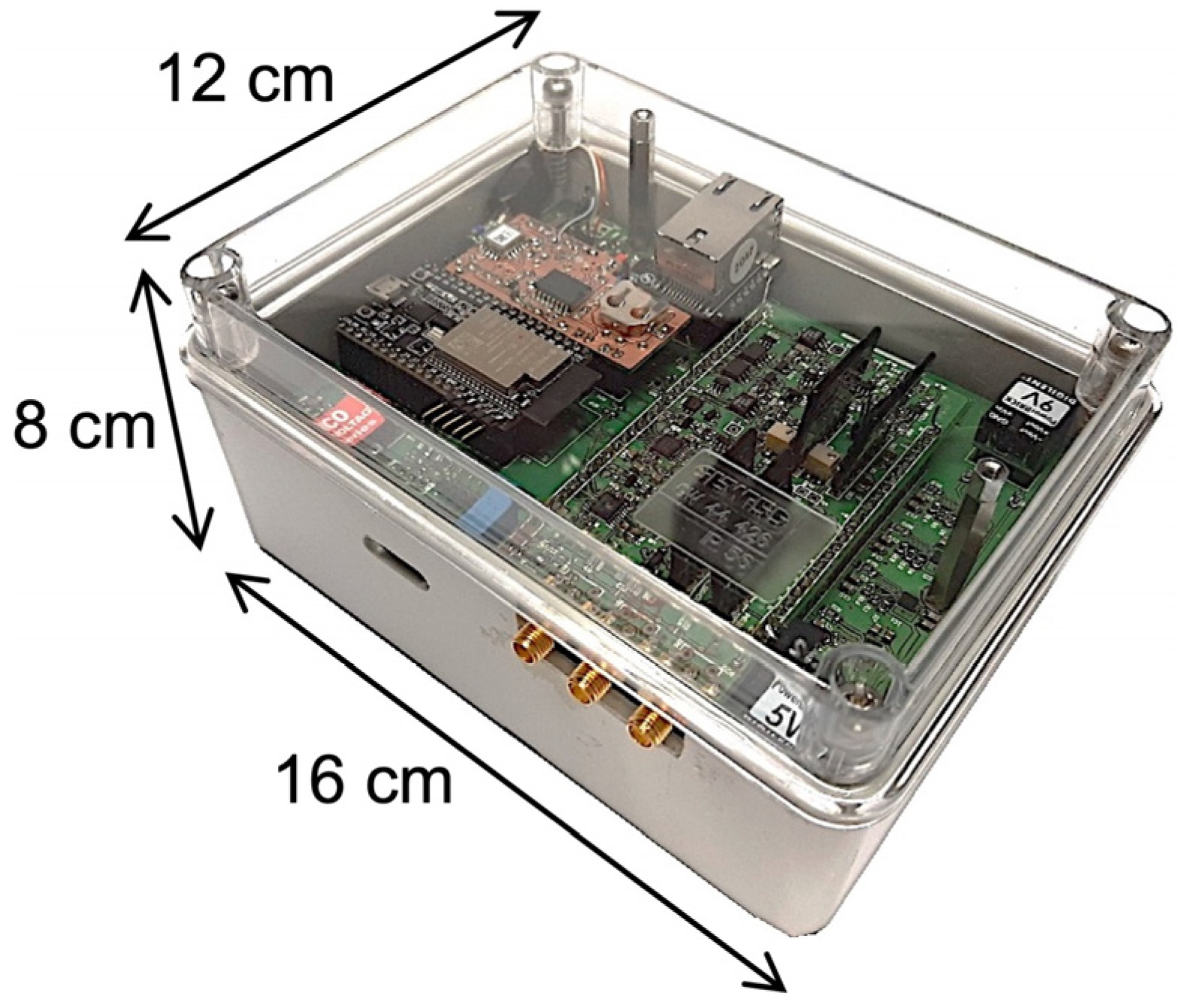
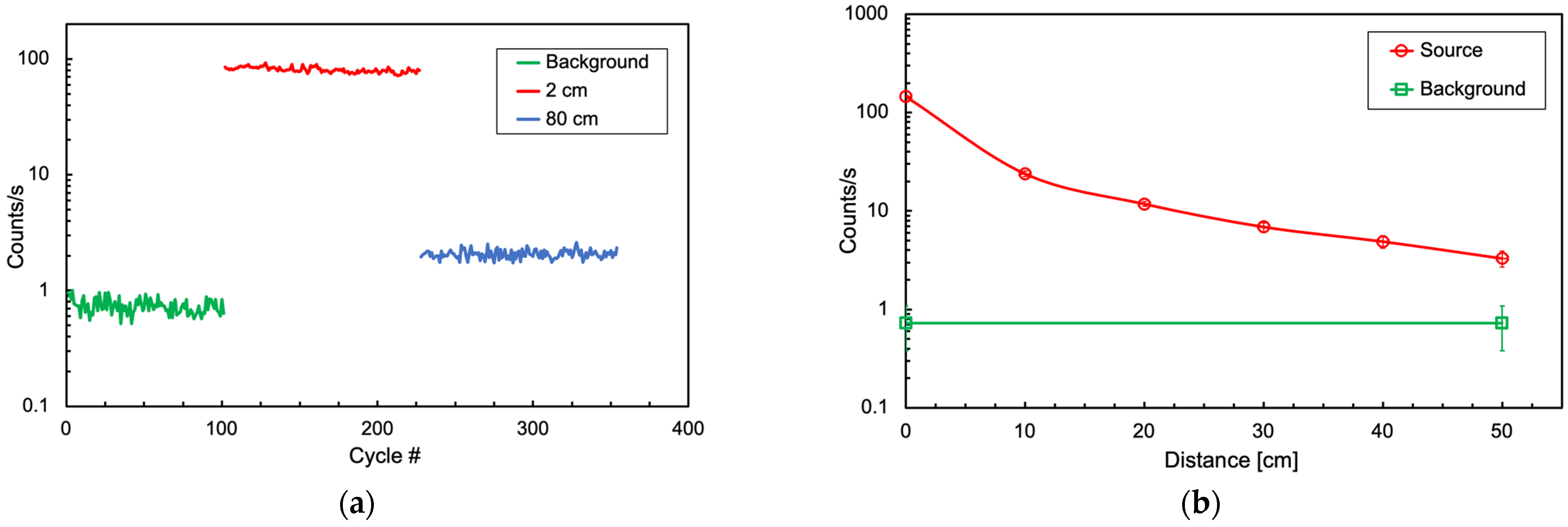

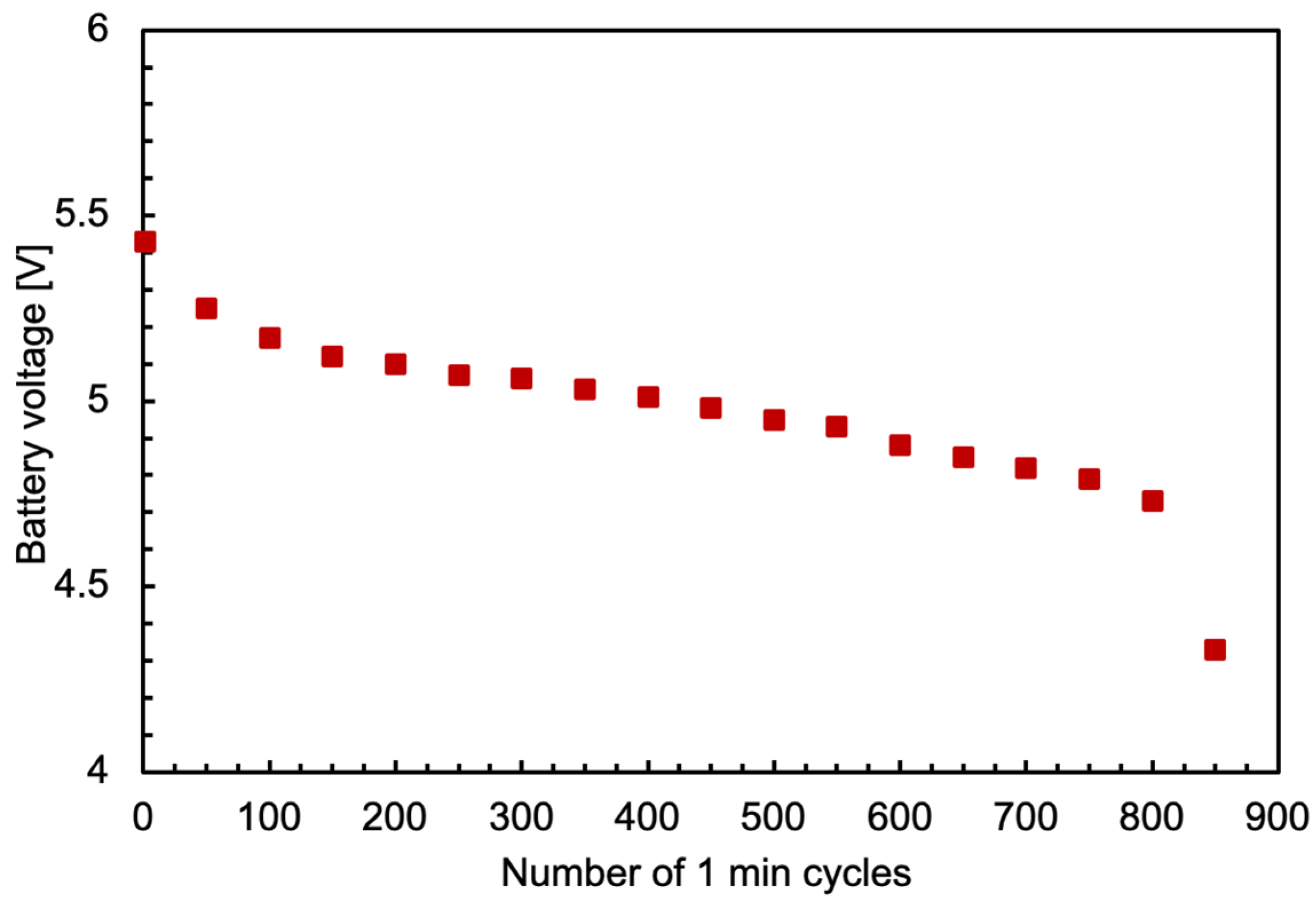
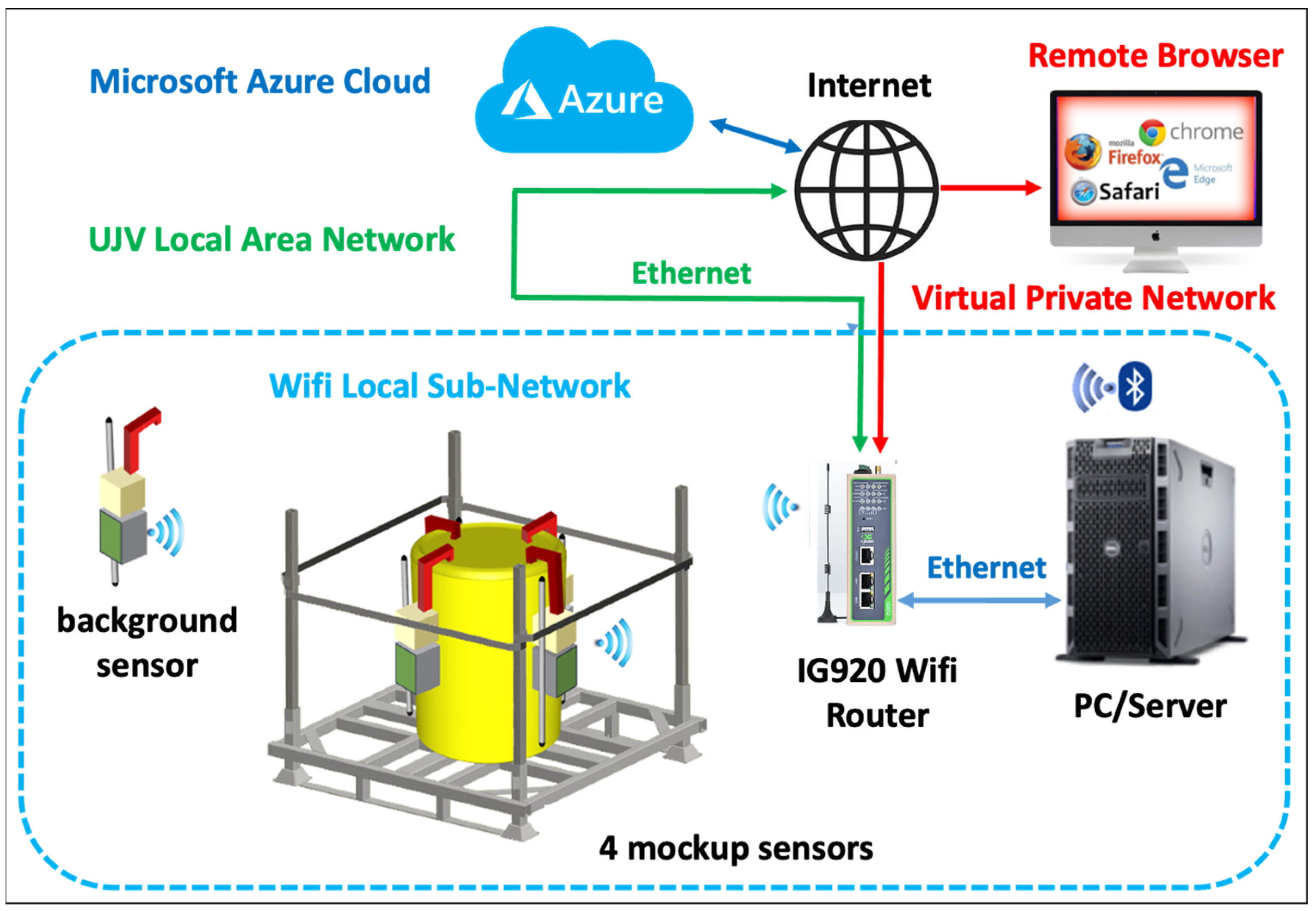
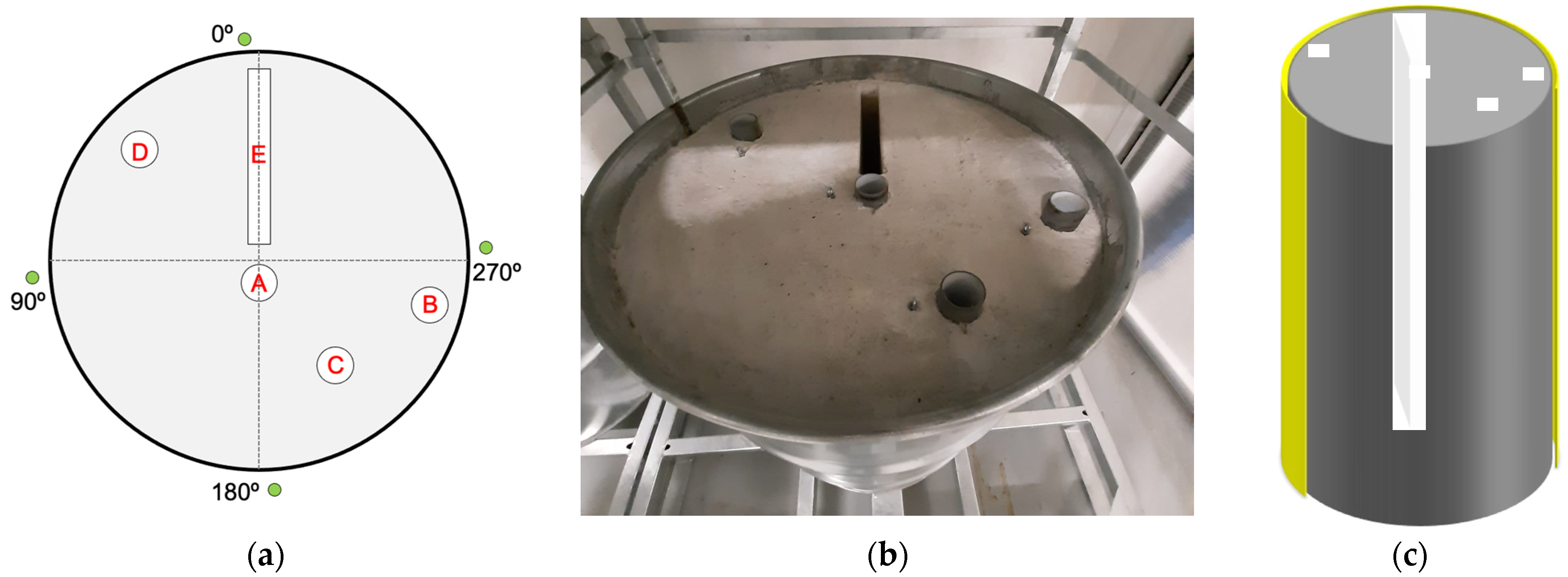


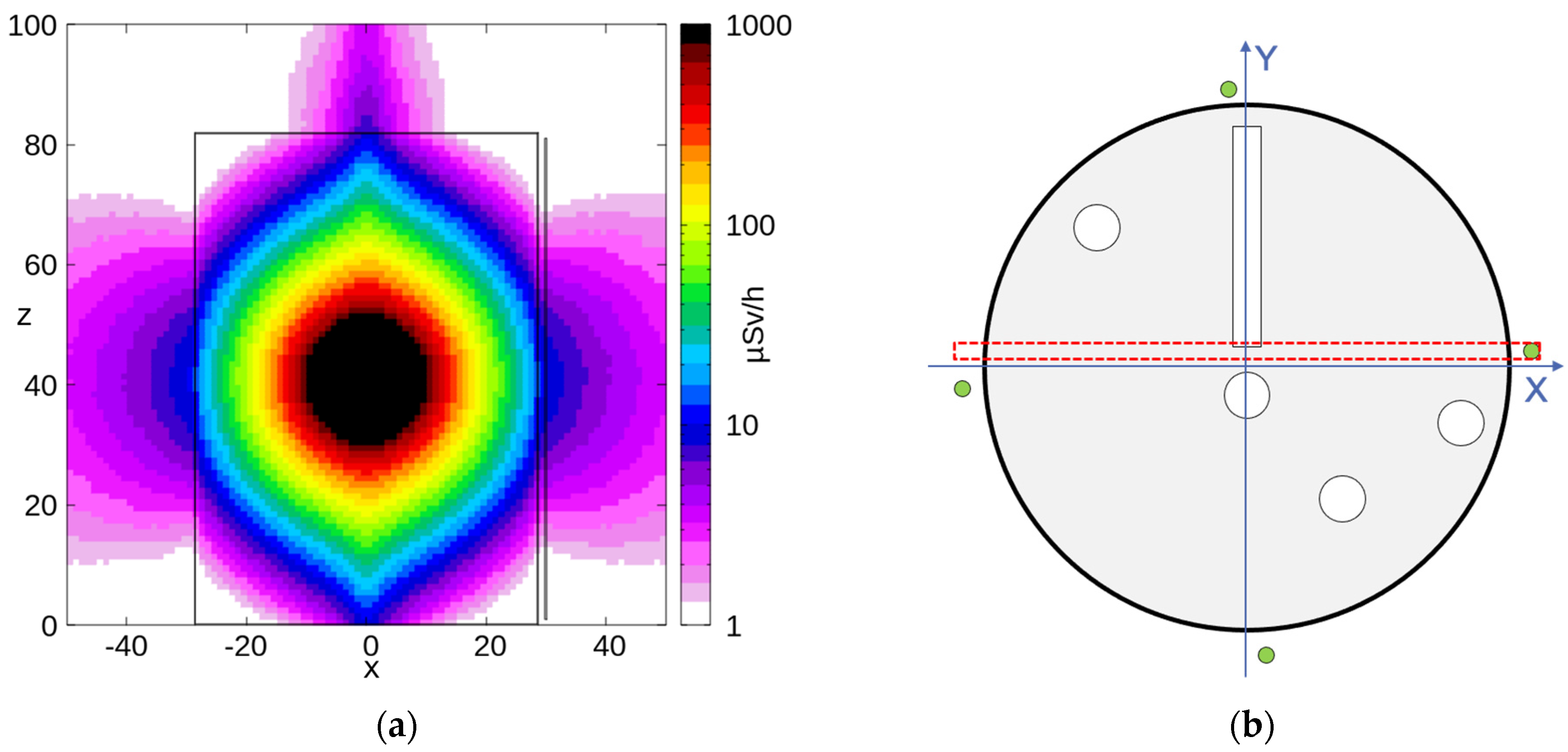
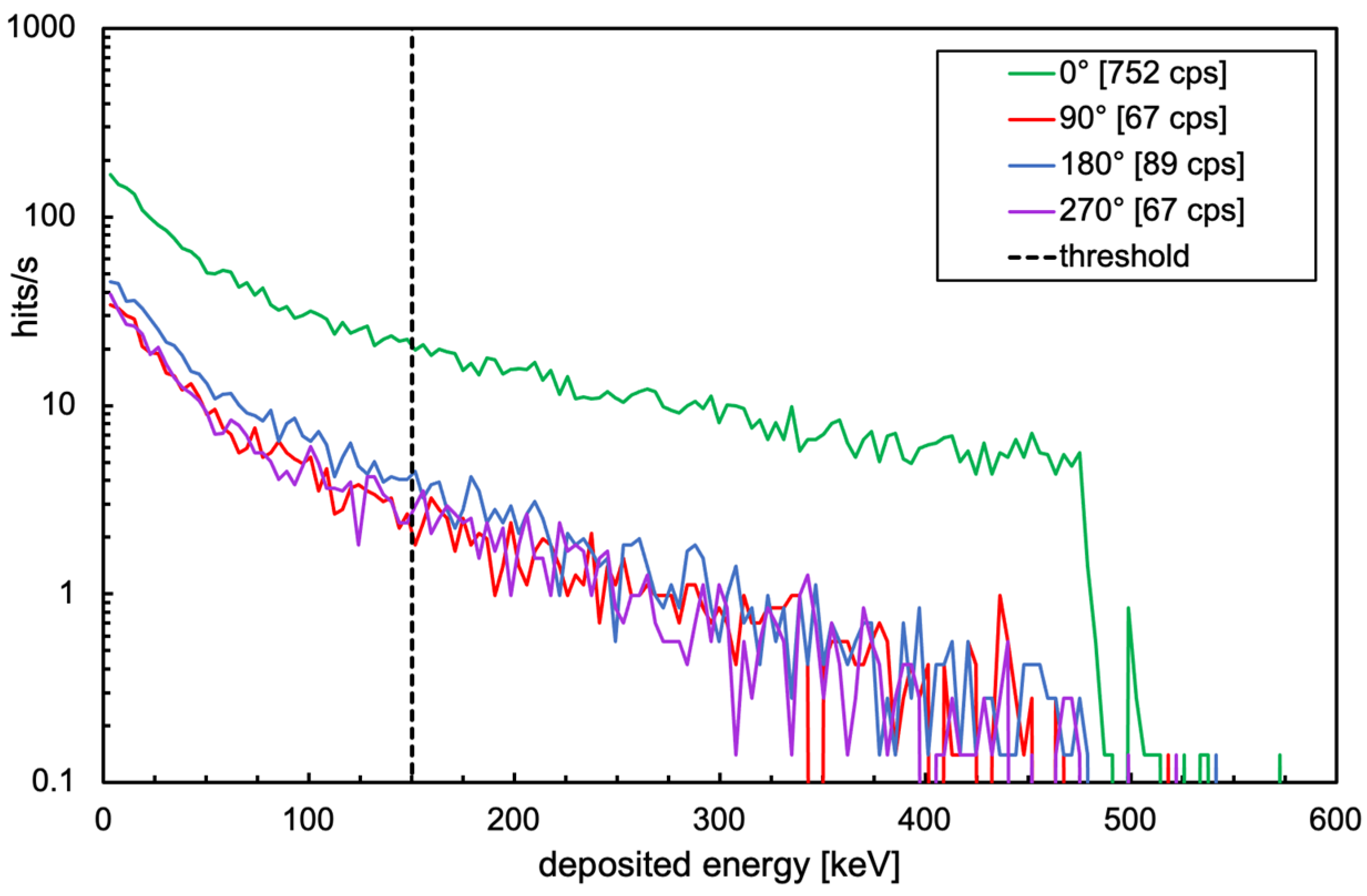

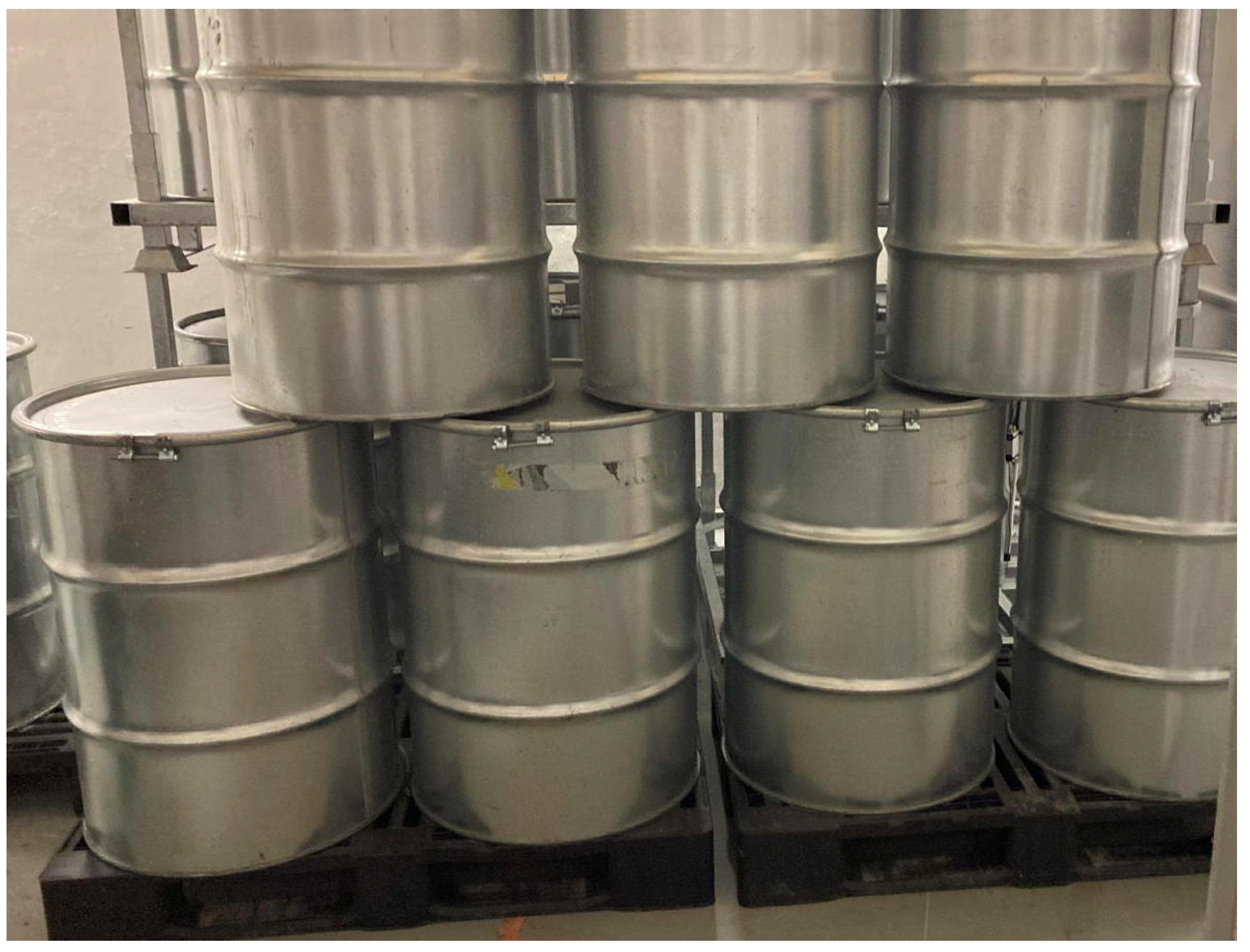
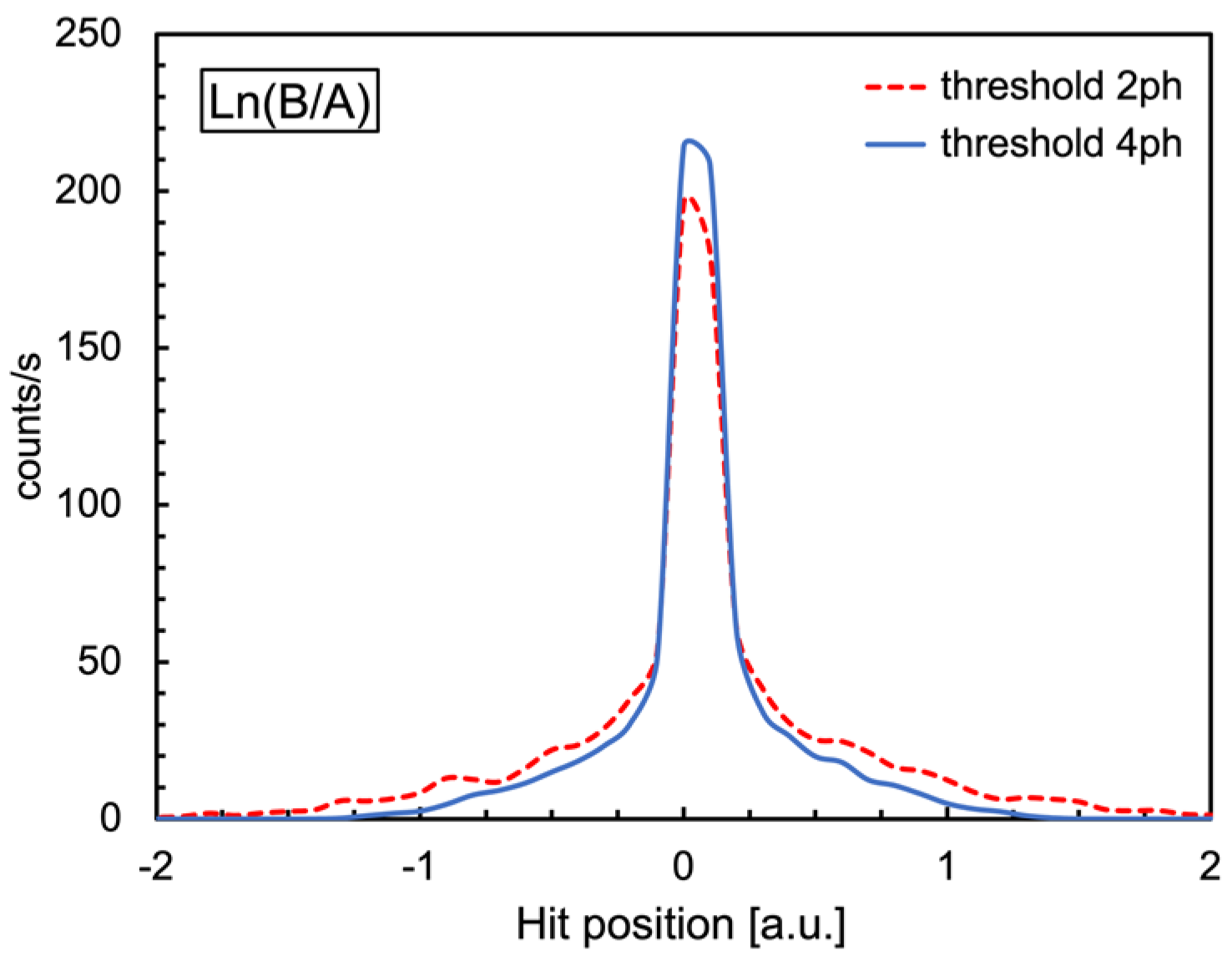




| Position | Dose Rate at 0° [µSv/h] | Dose Rate at 180° [µSv/h] | ||||
|---|---|---|---|---|---|---|
| Simulated | Measured | SciFi | Simulated | Measured | SciFi | |
| high | 30 | 45 | 32 | 2 | 1.5 | 6.6 |
| middle | 115 | 80 | 18 | 15 | ||
| low | 30 | 25 | 2 | 3 | ||
| Det 0° | Det 90° | Det 180° | Det 270° | Det Background | |
|---|---|---|---|---|---|
| set Vbias | 27 | 27 | 27 | 27 | 27 |
| measured Vbias | 27.00 ± 0.027 | 27.15 ± 0.026 | 26.95 ± 0.028 | 27.01 ± 0.036 | 26.86 ± 0.021 |
| SciFi | Average Count Rate Measured [cps] | Average Count Rate Simulated [cps] | Average Dose Rate from Measurement [µSv/h] | Average Dose Rate from Simulation [µSv/h] |
|---|---|---|---|---|
| 0° | 745.0 | 752 | 32 | 32 |
| 90° | 55.0 | 67 | 2.4 | 2.9 |
| 180° | 153.8 | 89 | 6.6 | 3.8 |
| 270° | 41.6 | 67 | 1.8 | 2.9 |
| Background | 4.1 | - | 0.2 | - |
Disclaimer/Publisher’s Note: The statements, opinions and data contained in all publications are solely those of the individual author(s) and contributor(s) and not of MDPI and/or the editor(s). MDPI and/or the editor(s) disclaim responsibility for any injury to people or property resulting from any ideas, methods, instructions or products referred to in the content. |
© 2024 by the authors. Licensee MDPI, Basel, Switzerland. This article is an open access article distributed under the terms and conditions of the Creative Commons Attribution (CC BY) license (https://creativecommons.org/licenses/by/4.0/).
Share and Cite
Romoli, M.; Di Giovanni, M.; Di Meo, P.; Pandalone, A.; Principe, C.; Sabbarese, C.; D’Onofrio, A.; Prchal, K.; Záruba, J.; Finocchiaro, P. A Wireless Gamma-Ray Monitoring System for Cemented Radwaste Drums. Sensors 2024, 24, 2332. https://doi.org/10.3390/s24072332
Romoli M, Di Giovanni M, Di Meo P, Pandalone A, Principe C, Sabbarese C, D’Onofrio A, Prchal K, Záruba J, Finocchiaro P. A Wireless Gamma-Ray Monitoring System for Cemented Radwaste Drums. Sensors. 2024; 24(7):2332. https://doi.org/10.3390/s24072332
Chicago/Turabian StyleRomoli, Mauro, Michele Di Giovanni, Paolo Di Meo, Antonio Pandalone, Claudio Principe, Carlo Sabbarese, Antonio D’Onofrio, Karel Prchal, Jakub Záruba, and Paolo Finocchiaro. 2024. "A Wireless Gamma-Ray Monitoring System for Cemented Radwaste Drums" Sensors 24, no. 7: 2332. https://doi.org/10.3390/s24072332
APA StyleRomoli, M., Di Giovanni, M., Di Meo, P., Pandalone, A., Principe, C., Sabbarese, C., D’Onofrio, A., Prchal, K., Záruba, J., & Finocchiaro, P. (2024). A Wireless Gamma-Ray Monitoring System for Cemented Radwaste Drums. Sensors, 24(7), 2332. https://doi.org/10.3390/s24072332







